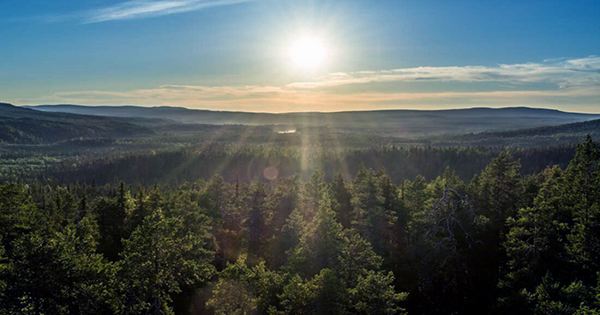Lapland is not all about Santa and snow-capped sleighs. In fact, this summer it has been the one-time heatwave of the century and has been enduring generally dangerously hot weather. On July 5, Lapland Land experienced a temperature of 33.5 degrees Celsius (92.3 degrees Fahrenheit) at a weather station in Kevo, according to the Finnish Meteorological Institute (FMI). This is the warmest temperature on record in Lapland since July 1914, when the Thule weather station in western Inari recorded 34.7 degrees Celsius (94.46 degrees Fahrenheit).
Lapland is the largest and northernmost region of Finland, part of which extends to the Arctic Circle. After the famous Finnish radio broadcaster Marcus Routio was broadcast, it became the spiritual abode of Santa Claus and Christmas. The Santa workshop was discovered in Lapland in 1927.
However, Lapland doesn’t feel like a soft Christmas card all year round. Every summer, large parts of Lapland feel even more temperate, with the midnight sun illuminating the entire 24-hour sky. Complete Like other parts of the world this summer, Finland’s weather has really gone out of control.
“Like June, July is really warming up. There was virtually no rain anywhere. It looks like a new era of drought and heat is about to begin, “FMI meteorologist Zari Tuovinen told the Finnish newspaper Helsingin Sanomat this week.” It should be noted that another wave of drought is now coming to Finland. All of the Nordic countries are currently experiencing extreme heat, with temperatures, water shortages and parked animals in Sweden, Norway and Finland raising warnings. According to Scottish meteorologist Scott Duncan, temperatures around Scandinavia average an average of 10 degrees Celsius to 15 degrees Celsius (18 degrees Fahrenheit to 27 degrees Fahrenheit).
Swedish climate campaigner Greta Thanberg tweeted: “June 2021 was the warmest June ever recorded in my hometown Stockholm by a large margin.” “The second June was 2020 in 2019.” Am I sensing a pattern here?
Even outside of northern Europe, heatwaves have swept across much of the northern hemisphere over the past month, from the Pacific Northwest to Siberia. For decades, scientists have warned that climate change will make heat waves longer, wider, denser and more intense. This reality is here now. Hundreds of peer-reviewed surveys have been able to directly attribute heatwaves and other extreme weather events to human-driven climate change. These extreme events will become more frequent and intense as the climate crisis continues to unravel.














